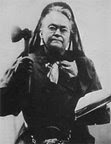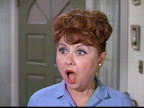In this post, I will consider the cultural aspects of Roy Nosek’s opposition to student housing. I am convinced that’s really where his opposition rests; he has no coherent economic theory that describes and addresses student housing demand in Whitewater. He does, however, have a clear cultural opposition, and that’s what I will consider here.
What is his cultural opposition to student housing, and students themselves? GazetteXtra reporter Carla McCann relates them, and Nosek himself has related them in the past. (I’ll have more about the quality of McCann’s journalism in my third post in this series.) Nosek dislikes the supposed noise, disruption, and damage to the beauty of the neighborhoods that he believes students create. He also claims to champion the cause of young families seeking to buy homes.
As for noise and disruption, Nosek’s definition of those nuisances is surely more expansive than others’ definitions. At the council meeting during which he played his slide show of supposed housing ordinance infractions, Nosek spared no additional car in the front yard, no stray trash-can. At that meeting, he reminded listeners that checking for violations is part of his Sunday, before church activities. If, on a Sunday morning as you prepare for church, you notice a cranky dentist skulking about with a camera, then you’ll know that your neighborhood is under his vigilant defense. (A man with more self-awareness would not have made this sort of announcement – more of an admission, really – in public.) That’s wouldn’t be Roy Nosek, D.D.S., though; he’s a true crusader against the depredations of shiftless, marauding students. To paraphrase a headline from the Register, “What Would We Ever Do Without Him?”
This community should expect more tolerance than that of a fussy, overly sensitive dentist-politician. (No one questions the wrong of a few, shameful incidents of property damage. I have written against that damage in the past. The problem is Nosek’s grossly expansive definition of a problem.)
As for his aesthetic objections, I find Nosek’s complaints unconvincing, in the same way that I would find the complaints of a glutton about others’ overeating unconvincing. Has anyone seen the professional office of Roy Nosek, D.D.S.? Anyone? It’s one of the least aesthetic buildings in Whitewater. That’s least aesthetic buildings, which translates for you and me as one of the ugliest buildings. It’s dull and drab, with overly large letters displaying his name and occupation. The letters are in a style unsuitable to a professional building, but commonly found carved in wood in children’s nurseries and kindergarten classrooms.
I was sorry to hear that the fraternity house next door to Nosek’s office caught fire. It’s fortunate that no one was more seriously injured. The owners and occupants of that fraternity house do have, however, one consolation. Even in its fire-damaged condition, the fraternity still looks better and more interesting than Nosek’s office. Much better.
I have decided not to offer a picture of Dr. Nosek’s office, as I am concerned that my camera lens might break.
What of Nosek’s contention that he seeks to help families with young children buy homes, and thereafter add their children as students to our school district’s enrollment? I advocate home ownership, too. I am convinced that the best way to give young families the chance for a home is through a vibrant, free market in real estate.
I would not target a certain group for preference as home buyers, however. I advocate home ownership not merely for families with children, but for single adults, married couples without children, and unmarried couples without children, too. I am not about to say, in advance, that some would make better neighbors than others. Each should be free to enter the market without an advantage beyond strength as buyers. (Only in that way will the market grow large enough to satisfy demand of all sorts of potential buyers.)
In fact, adult couples without children often make the best of opportunities to rehabilitate a home. They have available more time and disposable income to devote to a home, and through their efforts the entire community may be made stronger. They’re not Nosek’s apparently favored buyers, so to speak, but the law does not allow that they be excluded. Even the ordinances that he seeks to enforce recognize that they cannot lawfully be excluded from any residential district in the city (‘no more than three unrelated persons’).
Ultimately, the oddest part of Nosek’s crusade is his undisguised antipathy toward students, and his encouragement that citizens tattle on each other to municipal authorities at every opportunity. I have satirized Nosek as a small town Ahab after students, and as a Carrie Nation, complaining about alcohol and boozing and partying college kids.
Feel free to dislike what you want, but I cannot help but think that these dislikes are petty and beneath a serious man. That’s why I have also described Nosek as a modern day Mrs. Kravitz, worried too much about his neighbors’ minor misconduct.
Nosek’s not the worst character in town, but he is one of the most visibly irritable and angry. There’s not a bit of poise, subtlety, or charm evident in him. He frequently violates most of my Tips for Meetings suggestions with his cranky rants and lack of grace. Worse still, he’s not especially articulate, and the angrier he gets, the less articulate he is. His halting, stammering frustration only makes him seem angrier, crankier, and less reasonable. A poised and calm opponent could gently provoke Nosek and watch him fall apart in reaction.
It’s not his concerns, it’s his recourse that’s worst of all. He encourages his fellow citizens to report infractions wherever they see them, turning this small town into a petty, intrusive place. (I note that there’s a difference — at least in public presentation – between Nosek and Marilyn Kienbaum. Nosek wants ordinances enforced, and violators caught and fined. Kienbaum, as the GazetteXtra quotes her, recounts only her own efforts to talk to her noisy neighbors. Kienbaum might often side with him, but her actions as she recounts them are preferable to his. An elderly woman who deals with her neighbors face-to-face is more admirable than a man who asks his neighbors to tattle on each other at every occasion.)
Our municipal enforcement culture is broken, inefficient, and biased. The perception of selective enforcement is so rampant that it’s even a topic at council meetings. (So obvious is the problem that recently, no less than Miss Kienbaum – herself favored by many of the town clique – mentioned it during a discussion of enforcing signage restrictions).
It’s that broken enforcement culture, with too many small people trying to act big, on which Nosek bases his plan for community preservation. The consequence of his plans is community stagnation, ossification, and a town of finger-pointers. He wants to freeze life as he wants it, the wants of others notwithstanding.
What’s Roy Nosek’s idea of a beautiful Whitewater? It’s the entire city under a giant snow globe, forever frozen. Perhaps someone might remind him that ordinary people cannot live and thrive that way, and neither can our city.



